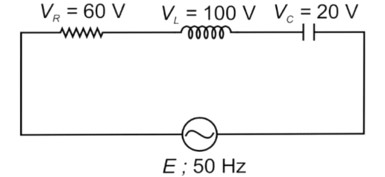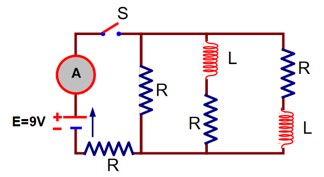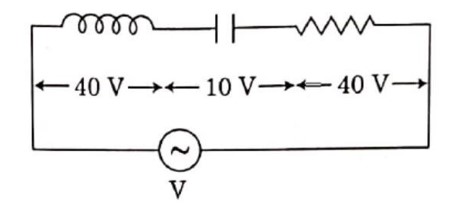Alternating Current Overview
Get insights from 72 questions on Alternating Current Overview, answered by students, alumni, and experts. You may also ask and answer any question you like about Alternating Current Overview
Follow Ask QuestionQuestions
Discussions
Active Users
Followers
New answer posted
a month agoContributor-Level 10
On increasing XC decreases so Z decreases, current in circuit increases.
New answer posted
a month agoContributor-Level 10
R =
L = 2 mH
E = 9V
Just after the switch 'S' is closed, the inductor acts as open circuit.
New answer posted
a month agoContributor-Level 10
Since current is in phase with voltage, it means circuit is in resonance, so we can write
f =
New answer posted
a month agoContributor-Level 10
Diameter = main scale reading + (circular scale reading * least count)
Diameter = 0 + (52 * 0.01 mm) = 0.52 mm = 0.052 cm.
In the RLC circuit:
Given I? = 10√2 A, so I? = I? /√2 = 10 A.
V? = √ [V? ² + (V? - V? )²] = √ [40² + (40 - 10)²] = √ [1600 + 30²] = √ [1600 + 900] = √2500 = 50 V.
Impedance Z = V? / I? = 50 V / 10 A = 5 Ω.
For Hindi: I? = 10√2 A, V? = 50V, Z = V? /I? = 50/ (10√2) = 5/√2 Ω.
New answer posted
a month agoContributor-Level 10
z = √ [R² + (X? - X? )²] = √ [6² + (4-10)²] = 6√2 Ω
Power factor = cosφ = R/z = 6/ (6√2) = 1/√2
New answer posted
a month agoContributor-Level 10
I = I? sin (ωt) + I? cos (ωt)
This can be written as I = I? sin (ωt + φ), where I? = √ (I? ² + I? ²)
A hot wire ammeter reads the rms value of the current.
I_rms = I? /√2 = √ (I? ² + I? ²)/√2
Taking an Exam? Selecting a College?
Get authentic answers from experts, students and alumni that you won't find anywhere else
Sign Up on ShikshaOn Shiksha, get access to
- 65k Colleges
- 1.2k Exams
- 682k Reviews
- 1800k Answers



